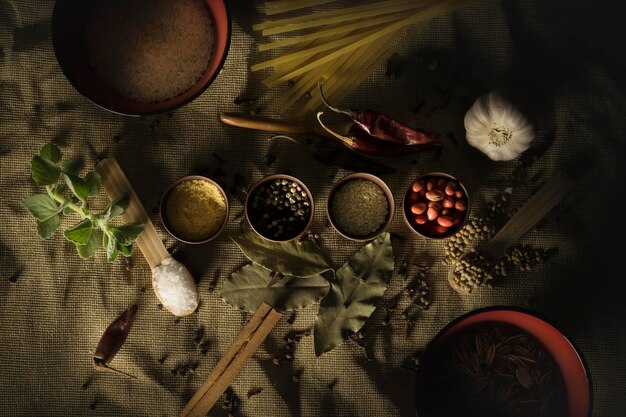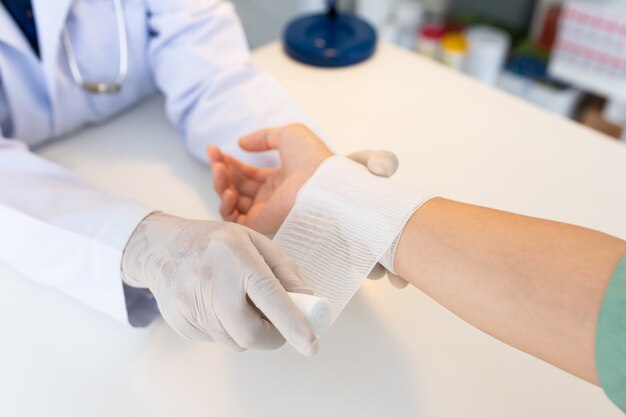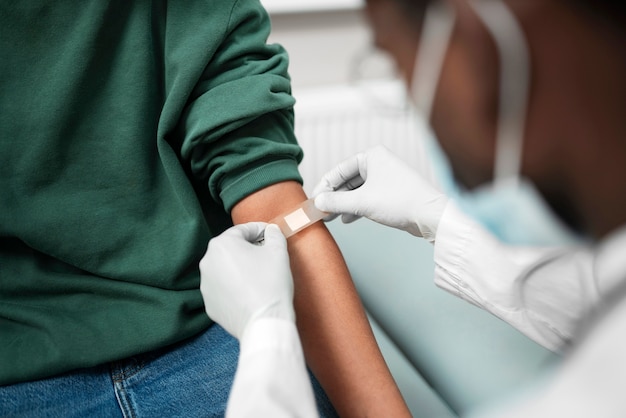Ask Ayurvedic doctor a question and get a consultation online on the problem of your concern in a free or paid mode. More than 2,000 experienced doctors work and wait for your questions on our site and help users to solve their health problems every day.
Shop Now in Our Store
Panchvalkal Kwath: A Comprehensive Exploration of Ayurveda’s Ancient Remedy

Introduction
Panchvalkal Kwath is an age-old Ayurvedic formulation increasingly recognized for its potential health benefits, particularly in skin and wound care. Derived from the barks of five distinct trees—often referred to as the “Panchvalkal” group—this preparation has been a staple in Ayurvedic practice for centuries. Today, with renewed interest in integrative medicine and plant-based remedies, Panchvalkal Kwath is gaining traction in academic studies, wellness circles, and clinical practice alike.
In this article, we will dissect the origins of Panchvalkal Kwath, explore the latest scientific findings, and offer practical tips for its safe use. Whether you are an Ayurvedic professional, a curious health enthusiast, or someone looking to explore natural therapies, this guide will equip you with the knowledge and confidence to navigate Panchvalkal Kwath responsibly.
Disclaimer: The information provided in this article is for educational purposes only. It should not replace professional medical advice. Always consult a qualified healthcare provider before making any changes to your wellness routine.
Table of Contents
-
What is Panchvalkal Kwath?
-
Historical Context and Ayurvedic Significance
-
Composition: The Five Key Ingredients
-
Mechanism of Action and Pharmacological Insights
-
Scientific Research and Clinical Evidence
-
Potential Health Benefits
-
How to Prepare Panchvalkal Kwath at Home
-
Safety, Side Effects, and Precautions
-
Frequently Asked Questions (FAQ)
-
Conclusion and Key Takeaways
1. What is Panchvalkal Kwath?
In Ayurveda, a “Kwath” refers to a decoction, typically prepared by boiling specific herbs or medicinal plants in water to extract their therapeutic compounds. Panchvalkal Kwath specifically denotes a decoction derived from the barks of five different trees. While the exact trees may vary slightly by tradition and region, they generally include:
-
Ficus benghalensis (Banyan)
-
Ficus religiosa (Peepal)
-
Ficus racemosa (Cluster Fig)
-
Ficus microcarpa or Ficus lacor (Often referred to as Pakar)
-
Ficus virens (White Fig)
This formulation is believed to offer broad-spectrum benefits such as anti-inflammatory, antimicrobial, and astringent properties. Ayurvedic practitioners often recommend Panchvalkal Kwath for cleansing wounds, alleviating skin irritations, and promoting overall skin health.
2. Historical Context and Ayurvedic Significance
Ancient Roots
The concept of Panchvalkal is deeply rooted in Ayurvedic texts such as the Charaka Samhita and Sushruta Samhita, which emphasize the importance of tree barks for their potent healing attributes. Trees from the Ficus genus have been revered for centuries in Indian culture—often planted around temples and religious sites. According to classical Ayurveda, each of these barks contributes distinct therapeutic qualities:
-
Banyan (Ficus benghalensis): Touted for its cooling and healing properties.
-
Peepal (Ficus religiosa): Regarded as sacred; believed to support skin renewal.
-
Cluster Fig (Ficus racemosa): Traditionally used in wound management.
-
Pakar (Ficus microcarpa / Ficus lacor): Known for aiding in digestion and supporting skin health.
-
White Fig (Ficus virens): Often cited for anti-ulcer and antimicrobial activities.
Cultural Relevance
Beyond medicinal uses, these trees hold cultural and spiritual significance, reinforcing their role in holistic well-being. The synergy of these five barks is said to create a powerful herbal matrix that detoxifies and rejuvenates the body. Ayurvedic experts often classify Panchvalkal Kwath under “Vrana Shodhana” (wound-cleansing) and “Vrana Ropana” (wound-healing) categories, highlighting its clinical importance in managing ulcers, cuts, and skin ailments.
3. Composition: The Five Key Ingredients
Let’s break down each component in detail to understand how it contributes to the overall efficacy of Panchvalkal Kwath:
-
Ficus benghalensis (Banyan Bark)
-
Key Properties: Rich in tannins, flavonoids, and polyphenols.
-
Traditional Use: Used for its astringent nature, helping to tighten tissues and aid in healing.
-
-
Ficus religiosa (Peepal Bark)
-
Key Properties: Contains phytochemicals like β-sitosterol and vitamin K.
-
Traditional Use: Revered for its anti-inflammatory and cooling properties, which can soothe irritated skin.
-
-
Ficus racemosa (Cluster Fig Bark)
-
Key Properties: Abundant in antioxidants and anti-inflammatory agents.
-
Traditional Use: Often used in Ayurvedic preparations for ulcers, skin lesions, and wound care.
-
-
Ficus microcarpa or Ficus lacor (Pakar Bark)
-
Key Properties: Noted for its digestive benefits and antibacterial potential.
-
Traditional Use: Commonly used in managing fungal or bacterial infections of the skin.
-
-
Ficus virens (White Fig Bark)
-
Key Properties: Known for antimicrobial and anti-ulcer properties.
-
Traditional Use: Often integrated into formulations aimed at treating chronic skin conditions.
-
4. Mechanism of Action and Pharmacological Insights
Astringent Action
Panchvalkal Kwath’s astringent nature can be attributed to the high tannin content in these barks. Astringents help contract and tighten tissues, creating a protective layer over wounds. This action can slow bleeding and reduce the likelihood of infection.
Anti-inflammatory Properties
Each Ficus species in the formulation contains unique phytochemicals known to reduce inflammation. Studies published in the Journal of Ethnopharmacology suggest that certain flavonoids and polyphenols found in Ficus bark can inhibit the production of pro-inflammatory enzymes like cyclooxygenase (COX) and lipoxygenase (LOX).
Antimicrobial and Antifungal Effects
According to a 2019 research article in the International Journal of Ayurveda Research, various Ficus species demonstrate broad-spectrum antimicrobial activity against pathogens such as Staphylococcus aureus and Escherichia coli. This makes Panchvalkal Kwath a promising adjunct therapy in treating skin infections and supporting wound hygiene.
Immunomodulatory Benefits
Emerging studies highlight the immunomodulatory potential of Ficus-derived compounds. In a 2022 review published in the Journal of Medicinal Plants Studies, researchers indicated that these compounds could help modulate immune responses by balancing pro-inflammatory and anti-inflammatory cytokines, although more clinical trials are needed to confirm these findings in humans.
5. Scientific Research and Clinical Evidence
-
Wound Healing Study
-
Source: Journal of Ayurveda and Integrative Medicine (2018)
-
Summary: Researchers investigated the wound-healing efficacy of Panchvalkal-based ointments. Results indicated faster healing time and reduced infection rates when compared to standard treatments.
-
-
Anti-Ulcer Potential
-
Source: Phytotherapy Research (2019)
-
Summary: Animal models showed that extracts from Ficus racemosa and Ficus benghalensis reduced ulcer severity, suggesting a potential role for Panchvalkal components in gastroprotective therapies.
-
-
Antibacterial and Antifungal Activity
-
Source: International Journal of Green Pharmacy (2020)
-
Summary: Isolated compounds from Peepal (Ficus religiosa) and Banyan (Ficus benghalensis) exhibited inhibitory effects against common skin pathogens, supporting the traditional use of Panchvalkal Kwath for dermal applications.
-
-
Clinical Case Studies
-
Source: AYU Journal (2021)
-
Summary: A set of case reports demonstrated successful management of diabetic foot ulcers using Panchvalkal decoctions in combination with modern dressings, highlighting its practical utility in integrative care.
-
While the data is promising, it’s essential to note that most studies have been either small-scale or animal-based. Larger, randomized controlled trials are needed to draw definitive clinical conclusions.
6. Potential Health Benefits
Given the evidence and historical usage, Panchvalkal Kwath may offer a range of benefits:
-
Wound Management: Facilitates cleansing, reduces infection risk, and potentially speeds up healing.
-
Skin Health: Alleviates acne, rashes, and other inflammatory skin conditions through its antimicrobial and soothing properties.
-
Anti-Ulcer Support: Preliminary studies suggest it could help protect mucosal linings, although more human trials are required.
-
Anti-Inflammatory Support: May help in reducing localized inflammation, contributing to comfort and quicker recovery post-injury.
-
Immunomodulation: Certain phytochemicals could help balance the immune response, though research in this area is still ongoing.
Important Note: These benefits are based on traditional use and emerging research. Always seek professional advice to confirm its suitability for your individual health needs.
7. How to Prepare Panchvalkal Kwath at Home
If you have access to the dried barks of these five trees, you can make Panchvalkal Kwath at home. Here’s a simple step-by-step guide:
-
Gather Ingredients
-
5 grams each of dried bark from Banyan, Peepal, Cluster Fig, Pakar, and White Fig.
-
Approximately 500 ml of clean, filtered water.
-
-
Cleaning the Bark
-
Rinse the bark pieces to remove any surface dirt or debris.
-
Pat them dry with a clean cloth or paper towel.
-
-
Boiling
-
Place the bark pieces in a stainless steel or glass vessel.
-
Add the 500 ml of water.
-
Bring to a rolling boil, then reduce the heat.
-
-
Simmering
-
Allow the mixture to simmer for about 15–20 minutes or until the volume reduces to roughly half.
-
Stir occasionally to ensure even extraction of the phytochemicals.
-
-
Straining
-
Turn off the heat and let the decoction cool slightly.
-
Strain the liquid through a fine mesh or muslin cloth to remove solid particles.
-
-
Usage
-
Topical: Let the decoction cool down completely and use it as a wound wash or for compresses on irritated skin.
-
Internal: Some traditional practitioners recommend oral consumption for digestive or ulcer-related complaints, but this should only be done under professional guidance.
-
Storage Tip: Freshly prepared Panchvalkal Kwath is most effective. If storage is necessary, refrigerate it for no more than 24 hours. Discard any unused decoction after this period to avoid bacterial contamination.
8. Safety, Side Effects, and Precautions
While Panchvalkal Kwath is considered safe when used correctly, it’s crucial to consider the following:
-
Allergic Reactions
-
Some individuals may be allergic to Ficus species. Conduct a patch test or consult an Ayurvedic professional before extensive use.
-
-
Topical Use Only for Open Wounds
-
If you plan on using Panchvalkal Kwath for wound management, it’s advisable to sterilize the decoction or use sterile gauze to minimize infection risk.
-
-
Pregnancy and Lactation
-
There is limited research on its safety profile for pregnant or nursing individuals. Always consult a qualified healthcare provider.
-
-
Drug Interactions
-
If you are on prescription medications for chronic conditions (e.g., diabetes, hypertension), discuss with your doctor before incorporating any herbal preparations into your regimen.
-
-
Professional Guidance
-
For oral consumption, always consult an Ayurvedic physician or a qualified herbalist to determine the correct dosage and frequency.
-
9. Frequently Asked Questions (FAQ)
Q1: Can I use Panchvalkal Kwath for everyday skin care?
Answer: Yes, you can use a diluted version as a gentle toner or cleanser. However, consult an Ayurvedic professional for the right dilution and frequency.
Q2: Is Panchvalkal Kwath suitable for children?
Answer: While traditionally used for various pediatric skin conditions, clinical data is limited. It is best to seek advice from a pediatrician or a qualified Ayurvedic expert.
Q3: Are there any modern medicines that mimic Panchvalkal Kwath’s effects?
Answer: Modern antiseptics and wound care products contain antimicrobial agents, but they typically focus on one active ingredient. Panchvalkal Kwath offers a synergistic blend of phytochemicals, which may offer broader benefits. More comparative studies are needed.
Q4: How long does it take to see results when using Panchvalkal Kwath for wounds?
Answer: Results vary depending on the type and severity of the wound. Some case studies suggest noticeable improvement in one to two weeks. Adherence to wound care protocols is crucial for the best outcome.
Q5: Can Panchvalkal Kwath be used in combination with other herbal remedies?
Answer: Many Ayurvedic practitioners do combine Panchvalkal Kwath with other formulations like Triphala or Neem decoctions. However, such combinations should be guided by an experienced professional to avoid unwanted interactions.
10. Conclusion and Key Takeaways
Panchvalkal Kwath is a remarkable Ayurvedic decoction with centuries of anecdotal support and a growing body of scientific research. Its astringent, anti-inflammatory, and antimicrobial properties make it a valuable ally in wound care and skin health. While more large-scale clinical trials are needed to bolster our understanding, existing evidence suggests that Panchvalkal Kwath could serve as a safe and effective integrative approach, especially when used under professional guidance.
Key Takeaways:
-
Synergistic Blend: Comprised of five Ficus species, each adding unique therapeutic qualities.
-
Broad Therapeutic Potential: Useful for wound management, skin irritations, and possibly ulcer care.
-
Science-Backed: Emerging studies support traditional uses, although more research is needed.
-
Safe Use: Generally safe when used appropriately; consult an expert for oral consumption.
-
Holistic Approach: Represents Ayurveda’s emphasis on synergy, balance, and individualized care.
Call to Action
If you found this article valuable, share it with friends or colleagues who might benefit. Comment below with your experiences or questions about Panchvalkal Kwath. For more in-depth discussions on Ayurvedic formulations, subscribeto our newsletter and stay updated on the latest research!
Disclaimer: This article is for informational purposes and does not substitute professional medical advice. Always consult a qualified healthcare professional for personalized guidance.
References and Further Reading
-
Charaka Samhita, Ayurvedic Classics (Translated)
-
Sushruta Samhita, Ayurvedic Classics (Translated)
-
Journal of Ayurveda and Integrative Medicine (2018). [Study on Panchvalkal in Wound Healing]
-
Phytotherapy Research (2019). [Ficus Species in Gastroprotective Therapies]
-
International Journal of Ayurveda Research (2019). [Antimicrobial Properties of Ficus Religiosa]
-
AYU Journal (2021). [Case Studies on Panchvalkal Kwath in Diabetic Foot Ulcers]
-
WHO Traditional Medicine Strategy (WHO, 2014-2023)
-
PubMed Database [Search Terms: “Panchvalkal”, “Ficus Bark”, “Ayurvedic Decoction”]
By blending ancient wisdom with modern scientific insights, Panchvalkal Kwath stands as a compelling example of how natural remedies can complement conventional medical approaches. Stay informed, consult professionals, and explore responsibly for a holistic path to well-being.
This article is checked by the current qualified Dr. Harsha Joy and can be considered a reliable source of information for users of the site.




